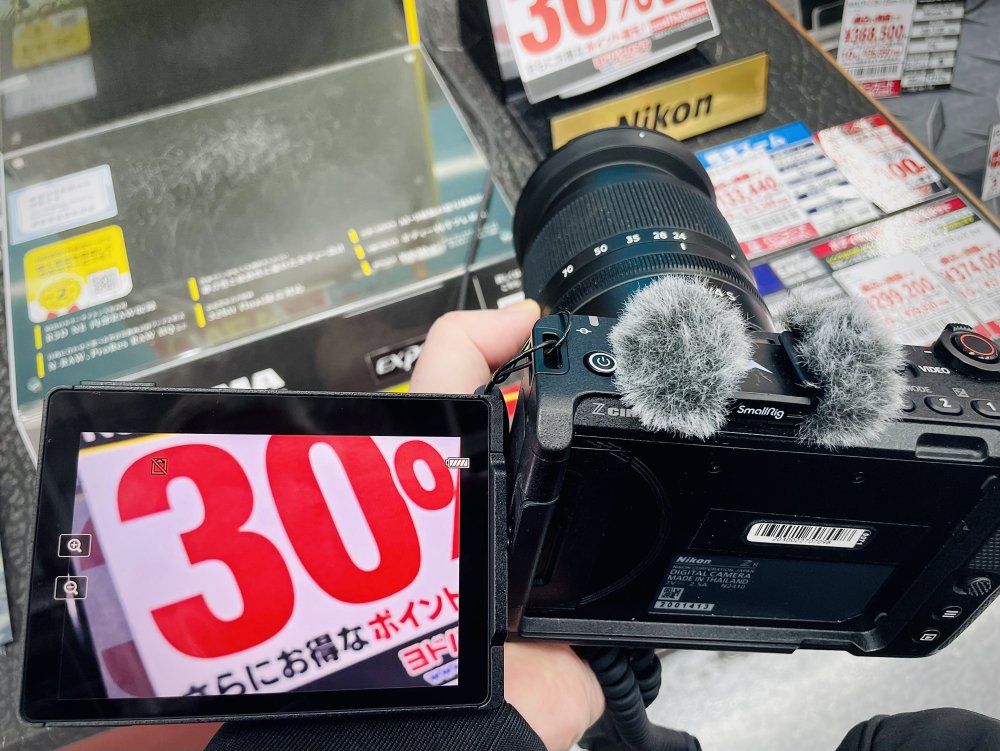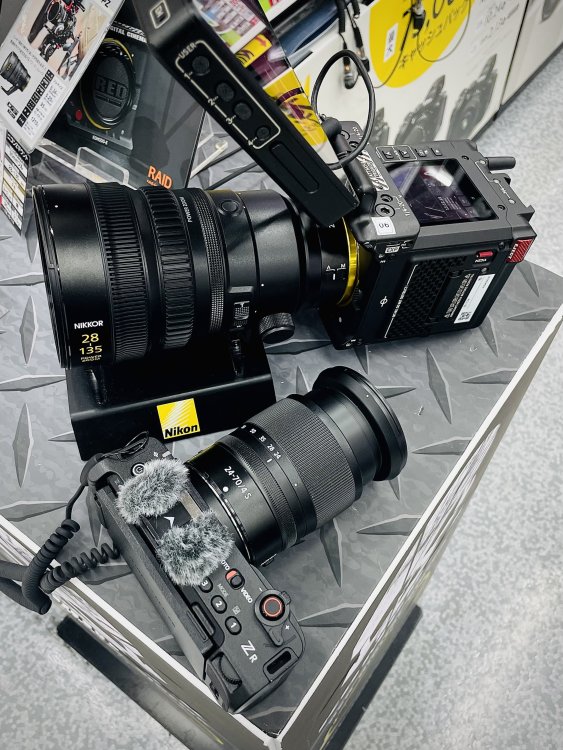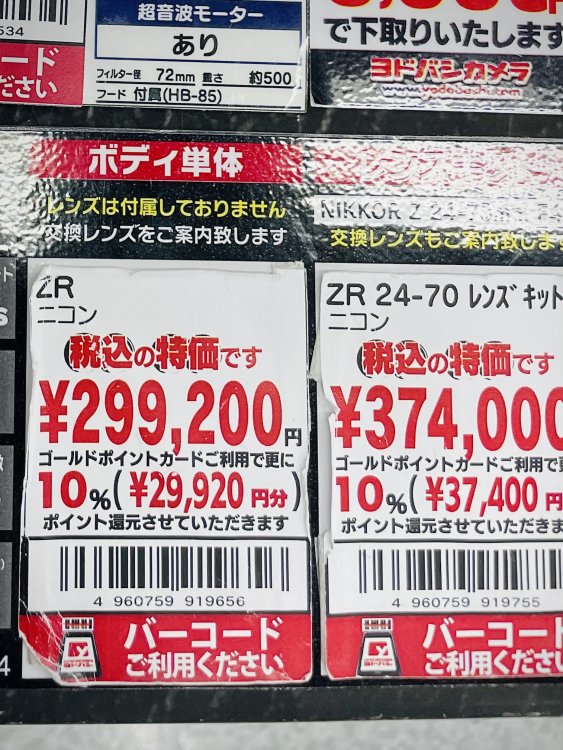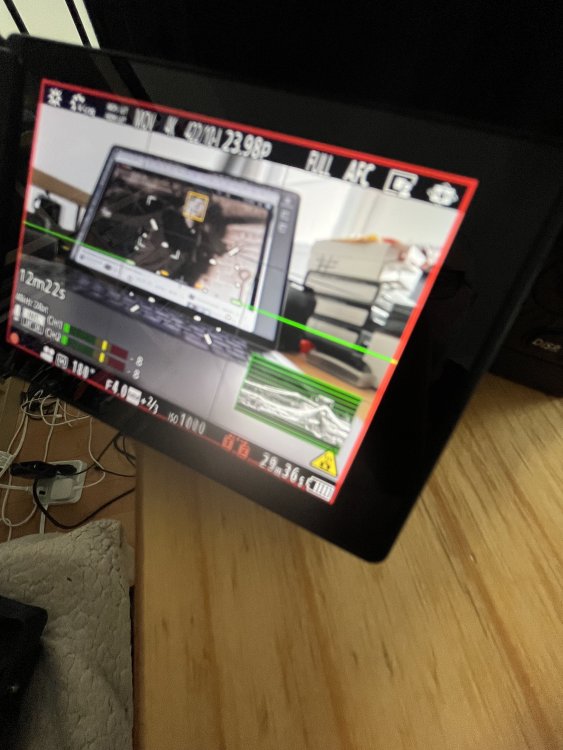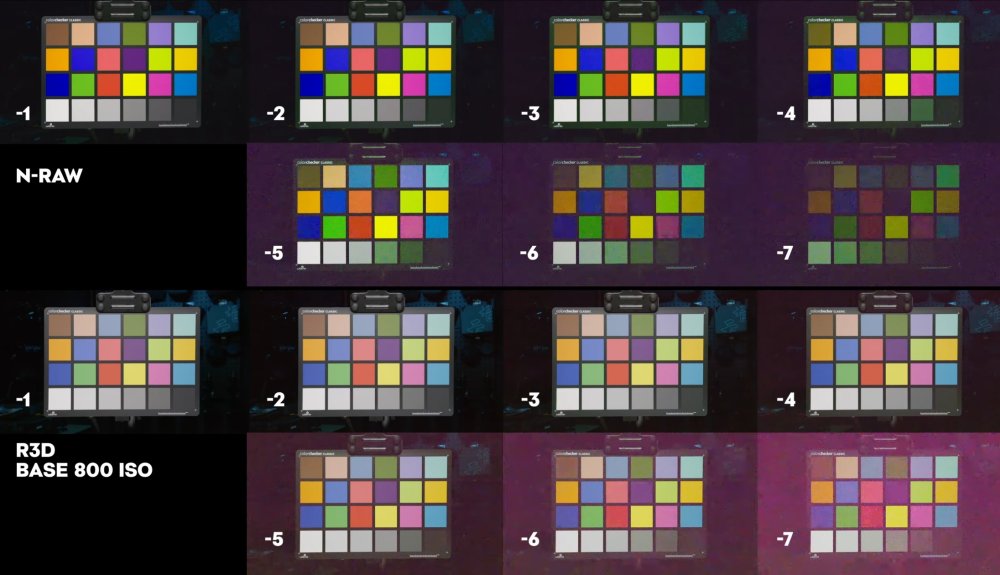Leaderboard
Popular Content
Showing content with the highest reputation since 11/15/2025 in all areas
-
So you feel it in your bones that something is wrong with society and that corporations are doing a lot of harm, turning the frogs gay and so on. What was it specifically about the aquarium exactly that triggered these feelings? The science of fish? Some naughty toads? A pink goldfish? The financial institutions, like it or not, along with food and oil, are needed for civilisation. I'm not saying they can't or shouldn't be reformed, and refocused so the interests of the people are put first ahead of offshore tax dodging profit-making. It is true that neo liberalism and big business has failed to make society or communities better, it has failed us and the environment, they are parasitical and we really need someone to turn to in these dark times who can do something about it. I am just confused as to why that hero has to be a pedophile rapist with criminal convictions and fraudulent businesses, a fascist and a racist, old as hell, fat and stupid, born into privilege, a cold heartless landlord and a cultural wasteland of a person who likes to fawn over supermodels and traffic women. No names of course. A clue... it's not Bill Gates or the boss of Pepsi. Ah yes the NGOs and USAID are at the root of all evil aren't they wanting to end world hunger. Ah yes Russia that hero state where the quality of life for most people barely rises above the grade of heavy depression and alcoholism, and for good reasons. A shit economy, stripped of its dignity by a mafia state, which likes to routinely arrest and murder it's own citizens, and one that likes to spend countless billions on a hybrid war with Europe and the UK rather than spending it on fucking hospitals. You really believe he's moving away from the imperialist clutches of wall street? What are the actual things which have occurred to suggest wall street is weaker under Trump? He's had 4 years 2016-2020 in power and now again embarking on another term and as far as I can see the stock market has never been more of a bubble, more damaging and more highly inflated and inequality of wealth never worse especially in the US. And this is not me spouting an opinion, there's factual evidence for it, not that you'd trust any of the journalists who'd trojan the inconvenient truth into your pathetic little fantasy land.4 points
-
Had a chance to have a look at one in the flesh. It feels good in the hand and the screen is everything that everyone has already said it is. The overall size of the camera is even more compact than I thought it would be, particularly when they are displaying it alongside the next one up in the Nikon RED range ! I was sorely tempted at the price here which works out at £1650 including the 24-70mm f4 lens for visitors. I’m here for a few more weeks so maybe I might buckle but the issue for me is that they had a Z8 at the next display and for an old fart like me that just appeals more, especially in light of the is it/isn’t it stuff about the RAW and the file extensions etc. I might just sit this out (again) for another year to see how the dust settles with firmware updates for the ZR and actually the Z6III as that might be the compromise play for me, although the Z8 will likely still win out. So, ultimately, I was able to put the ZR down and walk away fairly easily. Unexpectedly, the one I had far more difficulty walking away from the was the much maligned Fujifilm X-Half. Kinky.3 points
-
it started happening faster in hotter conditions, 24-27C, but still happens at around 20C. When I narrowed it down to the card being the issue, I would just leave the camera running on my table while doing post work, and would regularly fill up the card or run out of battery with the Delkin or OWC without any warning, but with the Lexar card about 10-12 minutes in, the heat warning sign would come on, and it would terminate recording in about 20 min or so. PS Should add the cards that cuz thermal issues for me are 128GB gold Lexar Cards2 points
-
It's absolutely pointless even talking to these people (if they are indeed real people), we are so far apart and they are so far down the rabbit hole thanks to social media. The great tragedy is that the internet in it's original concept was supposed to level up people's knowledge of the factual world and to broaden their minds, connect them with other cultures and other people. The way the billionaires have just completely subverted the technology is horrific and they are all mega rich as a result. Zuckerberg should be in jail. On social media, even the order of comments under a post swaps around depending on who the algorithm believes you will agree with most, so the counterbalance of views just never gets seen. And the end goal of all of this was never to break society - that's just collateral to the main mission, which is shareholder value. And if Zuck and Elon weren't bad enough and all the dark money sloshing about from Russia, I am equally as disgusted at the so-called "moral" liberal elite of tech leaders who stay silent on the destruction of our society and community cohesion in the name of profit. Like Tim Cook for instance.2 points
-
It makes sense to change cameras and not brands! I’ve been interested in the S1iiE as it does resolve a couple of things that I dislike about the S5ii. The S1iiE’s screen and evf would be much more comfortable for me. Like you I prefer the screen behind the lens. Whilst in general I prefer 1 camera for video and one for photo that’s not always possible. The photo/video switch would be a real upgrade. I have written the S1ii off for me as it won’t handle the heat here in Madrid but from what I’ve seen the S1iiE handles the heat better. So I’m thinking of changing a S5ii for the S1iiE and maybe picking up a S9 if I can find a good deal.2 points
-

Canon R6 mark III brings 7K60 RAW, Open Gate, CLog2
Emanuel and one other reacted to Andrew Reid for a topic
Scary image.2 points -
Ha! Ans it's said one is supposed to get more conservative as they get older. For me, I just can't shake capital being the vehicle for fascism. Souped up and hot-rodded to fly down the drag strip. And, yeah, since pseudo-capitalism is now global and we're on the verge on climate collapse? Woo boy. Buckle up. Yup, sure is hard not to be conspiratorial about it all. As someone once said, have a nice day "you fucking dumbasses" 😉2 points
-
ARRI closing up shop, needs a buy-out - maybe Sony?
MrSMW reacted to zerocool22 for a topic
Yeah I hope canon, sony or panasonic would just buy up ARRI just for its patents. Like Nikon did with RED (the nikon ZR looks amazing). If somebody would buy up ARRI and trickle down their patents in a 2K body they would own the filmmaker space and these camera's would fly off the shelves. (Event video etc might be a different game, where fast AF is more important, but heck these big 3 companies already have decent enough AF today as is). But sadly also a sign that the old ways of working is done for. AI will eat lunches, social media has killed traditional video jobs (artfull and skillfull). watching TV has declined, watching slop filmed with an iphone with crazy transitions and bad lighting has become the norm. (as it feels more real to the consumers, and I get that, but also sad to see jobs, careers and also art plummet). Even the actual movies that are being release over the last 15 yeras have been disneyfied. (cute animal, jokes, woke characters, ...) Not sure if anyone watched the new predator movie. The beginning of the film was great, and the ending was great, but man the middle part with bud, woke synthetics and the friendship arc just sucked.1 point -

Sony a7 IV really is a beast, even in 2025
Andrew Reid reacted to BTM_Pix for a topic
I had a go with an FX2 yesterday. The tilting EVF is great. As are all tilting EVFs.1 point -

ARRI closing up shop, needs a buy-out - maybe Sony?
majoraxis reacted to Andrew Reid for a topic
Camera market is a total sideshow for Zeiss, whose main income stream is from EUV lithography machine lenses, as a partner with ASML -> TSMC. The iPhone CPU is etched into silicon using Zeiss glass. These big companies are interested in growth. They'd rather buy an unprofitable, but growing company, than a profitable but stagnant one. The Chinese might buy ARRI for the patents and branding. Only if it stays in German hands will they continue as a cinema camera manufacturer. That's what I think anyway and I could be wrong, we'll see.1 point -

Sony a7 IV really is a beast, even in 2025
Andrew Reid reacted to Benjamin Hilton for a topic
Totally agree on this take. We use the 7IV along with an FX6 for doc shoots, a solid camera all around. It kind of just does everything really well, with an absolutely solid image to boot.1 point -
Let's not forget Nikon had no cine line, it was a clean buy with zero conflict of interest. Canon and Sony already have full cinema lines, so buying ARRI would create instant internal turf wars. Canon’s C-series and Sony’s VENICE would clash hard with the Alexa pipeline. At this point the wild card that makes the most sense is Apple. They could scoop ARRI up without blinking, keep it running as a prestige pro division, and then quietly bake LogC + ARRI color science straight into the iPhone Pro pipeline. Zero internal conflict, huge marketing flex, and a perfect fit with Apple’s long-term imaging strategy.1 point
-
They're already closing down their pro services, and no way they invest in a zero growth business when they kill their own zero growth businesses. Canon can't do it. That would be all against their ego. They and their customer base believe Canon color science is best in the world, and thats why they have 50% market share. They're like "we ain't need nobody". Sony will have a integration nightmare if they do it. Arri systems are in conflict with the whole Sony line up. Also it would be an official admission that the electronics/AV giant couldn't get the color science right and eventually had to go shopping. Nikon acquisition of RED unintentionally made this perception that its a preferred approach in Tokyo. But it isn't. Nikon had to choose between two costly options and the acquisition was cheaper. In China, its only DJI who can gain a lot with Arri reputation in its arsenal, but I don't think Germans are comfortable with giving away this German icon to Chinese. Zeiss would be the perfect owner. A German brand with enough money, so the brand stays in the country, and they're heavily invested in high end part of the cine market.1 point
-

ARRI closing up shop, needs a buy-out - maybe Sony?
zerocool22 reacted to Davide DB for a topic
If Panasonic would wake up, they could be the ones to get their hands on Arri. They already have a collaboration for the color profile, and Panasonic no longer has the professional division. But, as you say, the old Japanese guys have completely lost their minds. Could it be a Chinese company that pulls off the big coup?1 point -
It’s really good fun to shoot with too, especially with small manual primes (Thypoch Simera-c).1 point
-
I am one of the weirdos that bought an fx2. Sold my FX3 for it which may sound very strange! I wanted the viewfinder and a more detailed image plus the ability to crop. The bonus is that it is a great stills camera too. I paid £2050 through Panamoz which I think is a pretty good price for what you’re getting I.e a hardy, proven, no fuss image gatherer which is what I need for my very unsexy corp jobs.1 point
-
If you had my eyesight and shoot exclusively off the rear LCD in both bright sunlight and super low light…1 point
-
Just one dealbreaker for me with both the A7iv and the FX2, - the rear LCD. I would rather it was fully articulated like the A7RV, S1H, S1II etc, but it’s not. Not a dealbreaker on it’s own. But just 1 million dot? That’s a more than a bit shit, especially re. the FX2 as it’s APSC cousin, the FX30 has a 2.3 million dot LCD. If I was going to go in a Sony direction for my needs, it would be back to an A7RV for stills and a pair of FX30’s for video. And my old trio of Tamron zooms I dearly miss…1 point
-

Sony a7 IV really is a beast, even in 2025
ArashM reacted to Andrew Reid for a topic
I don't think there's much wrong with the slower sensor to be honest, I have come round to it, and I really like the FX2 as well - the images speak for themselves and it's one of the only cheap cinema cameras with both a proper EVF and mechanical shutter, and we all know that hybrid is where it's at... And again worth saying that unlike Panasonic S1 II - it is in the body of the flagship pro camera, not in the cut-price shell of a mid-range consumer camera. The partially stacked sensors are of course the current cutting edge, a7 V will be great but only if you NEED the speed. I don't shoot much 4K120p or 60p. Cinema 24p is still my most valued spec in terms of frame rates and as for 30p, it is still a TV / YouTube frame rate and doesn't look cinematic. Getting all this sensor talk in perspective, we'll go back to the very start. Canon used a Panasonic CCD in their first 1D DSLR, their own pioneering CMOS tech was not yet ready in time so they switched plans. Then, from the first Canon 1DS it was ready to go - BUT CMOS at this time was much slower than CCD. The 1D classic is the only FAST pro sports cameras ever made with a CCD! In the following years Canon were able to go from behind with CMOS and take the speed crown away from CCD sensors. The in-line A/D line-by-line readout tech of CMOS is what enabled video. Sony in 2005 commercialised their first CMOS sensor in the Sony R1 APS-C bridge camera. It had video only in terms of it could do live-view. The 10MP raw photos still stand up today. The way CMOS handles dynamic range is also different to CCD - a linear sudden blow-out in the highlights, but on CCD a more film-like non-linear and gradual highlight roll off and it was not until the Sony a7r III in 2018 that CMOS started to match CCD for colour fidelity and latitude. That is 18 years of development progress. The a7 IV sensor is a faster version of one of that chip, one of the most groundbreaking sensors of the last 25 years. 33mp instead of 42mp, but it sped up to enable a 7K full width pixel readout rather than pixel binned 4K. In 2025 it's still one of the only mid-range cameras to go past the 24mp mark. I think for £1500 that is a decent offer? Have you seen the a7r III's images? It's absolutely stunning, in some ways beats an a1 and z8. The a7 IV's "slow sensor" is at that level. From those very early days in early 2000s, video took another 8 years following the debut of CMOS - first with the Nikon D90 and then with the 5D Mark II. It took a further 6 years until 2014 for anyone to make a 4K capable full frame CMOS sensor. The a7r II was the first to do oversampled 5K->4K in S35 mode and full frame pixel binned 4K. Oooooodles of stuff has been shot since on this camera and on many other cameras with a similar level of rolling shutter. Of all the specs I care about, rolling shutter only occasionally presented itself as problem in the real world. I've owned countless full frame cameras... Panasonic S1, S1R, S1H, Sony a7s III, Sony a1, Nikon Z9 and Z8 but sold all of them. The only mainstay for me is the GFX 100. The only thing the faster Sony and Nikon cameras offer to the creative process, is speed and less rolling shutter. If action sports and slow-motion is your bag then great. When the a9 III with global shutter (and the slightly noisy base ISOs) comes down to under £2500 I might consider one of those but until then...For cinema... I think the a7 IV and FX2 are the best images you can get for the price. Although the Panasonic S1H has the edge in low light, and for HDMI RAW output to a hateful Ninja, it lacks the autofocus, the ecosystem of E-mount, and also of course the small and light body size.1 point -
Nikon Zr is coming
ND64 reacted to Ilkka Nissila for a topic
Curves are available in the advanced settings when creating custom picture controls (which you can the upload as recipes).1 point -

The D-Mount project
Andrew Reid reacted to Henryo for a topic
I thought I would add my project to this thread as I was somewhat inspired by it. Long story short, I modded my BMPCC to turn it into a D-mount camera.1 point -
SSD review says 256GB and 512GB Lexar Professional Golds get up to 85C and the 2TB card only to 63C. In the same review Delkin Black 512GB is the coolest at 39C. I have had no problems with 2TB Lexar Professional Gold in Z6iii at 25C in direct mid day sun, but 6k50p NRaw may not be as taxing to the camera and card as Panny’s 422 H.265.1 point
-
New advanced Venus processor apparently. Dunno how that translates to write speeds etc1 point
-
What climate is that in? Good to know there are cards with better heat management.1 point
-
Just chiming in, I've had a fair bit of overheating warning and shutdowns with my gold Lexar CFB cards, not a single issue with Delkin black or OWC purple cards! PS, I should add, this is with the S1Rii (x2)1 point
-
1 point
-
The new Canon RF 45mm 1.2 should fit ur taste.. similar rendering as the old EF 50mm 1.2 but much lighter and abit smaller.1 point
-

Lumix closing pro services on November 30, 2025.
ArashM reacted to John Matthews for a topic
It actually makes sense. He mentioned that European sales are up and that it wasn’t efficient to have each country running its own Pro Service. A single centralized service for all of Europe is logical—after all, it is one market, and one service center is enough to cover it. Plus, the European market benefits from a 5-year warranty, which is far more generous than what’s offered in the U.S. That level of coverage is already considered enough by U.S. standards and makes American pricing less competitive, whereas European prices for other brands are often higher anyway. I also get the impression that they’re preparing to offer additional types of services in Europe.1 point -

Lumix closing pro services on November 30, 2025.
John Matthews reacted to MrSMW for a topic
Summary = the sky is not falling in after all. We still wait to see however if the S1H ever gets replaced. I haven’t watched the hour and 20 minute video as I’m not that interested but I would guess that kind of thing would neither be confirmed nor denied and a vague, “things to come/watch this space” at best?1 point -
Viltrox joined L mount a little later than those other systems, but I'm certain lenses will start appearing quickly. Totally understand. There are valid schools of thought here: 1) the data image, change in post; 2) WYSIWYG. I also lean more for the latter, especially for stuff I'm too lazy to edit. As things move forward, I'm understanding that most of the manufacturers are producing for the optically "perfect" image because they can. We're not seeing those headline lenses so much anymore like that Nikon 50mm 0.95 brick to showcase their engineering prowess. If they do that, it's to give us affordable lenses at previously unthought of focal lengths or smaller sizes. Lumix has a boring set of lenses that work very well and they can be workhorses, just nothing really amazing or ridiculously small (i.e. 14mm f/2.5, 20mm f/1.7). They insulted all of their users with that 26mm and I want to go back in time and erase its existence.1 point
-
I would absolutely use it and as above, it would be my first choice, clean sheet. The ZR/Nikon probably doesn't quite have the AF of Sony and it might not quite have the IBIS of LUMIX, but we are really beginning to split hairs these days when it comes to spec and performance. It's compact, has possibly THE best lens selection (IMO, there is no 'possibly' about it, - it just does including near native adaptation of Sony E glass via Megadap) and it's e Shutter only approach on the ZR and Z8 would not be an issue for me as it is with LUMIX where in certain lighting conditions, it's shit (for stills). Give me a pair of ZR's, a single Z8 and 3 lenses of my choice, 1x monopod and 1x tripod and weddings/events would be a breeze. No better than my current LUMIX set up, just a sideways one and one I would not hesitate to use. I could make the same argument for Sony and Canon. It just comes down to personal choice.1 point
-
Nice. With a bit of practice it's less scary than it sounds, and you just need the right tools and steady hand. A JIS standard screwdriver is a must... they use weird Japanese screw-head geometry, which the normal Philips head screwdrivers have a habit of stripping. The only things I don't go near are modern lenses... Hellish. Especially the zooms if you go deeper than taking the rear mount off.1 point
-

In pursuit of maximum cinema
Ninpo33 reacted to Andrew Reid for a topic
I have many questions about your Sirui setup 🙂 How easy is it to focus and what's the min FD when combined with the Voigtlander 42? Are these shots wide open at F0.95 on the Voigtlander? Could you go wider, with the Sirui? Voigtlander 17.5mm? It really is a lovely result you've posted and would be happy to see more. The GH7 is such a good choice when you have optics as good as the Voigtlander Noktons are... and anamorphic is the cherry on top. Makes me want to get a GH7 in fact.1 point -

In pursuit of maximum cinema
Ninpo33 reacted to Andrew Reid for a topic
Panasonic did much more overall than BM.1 point

